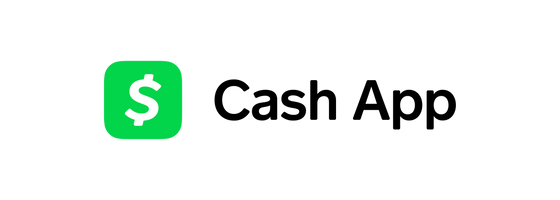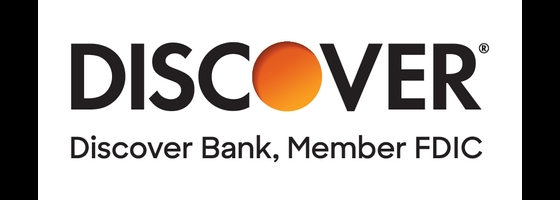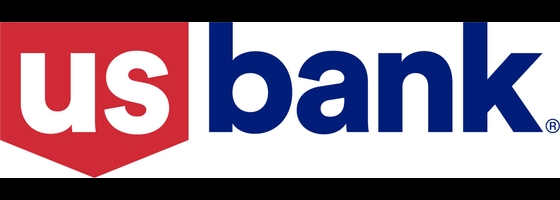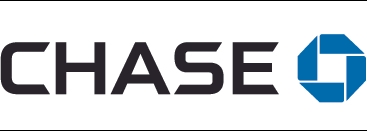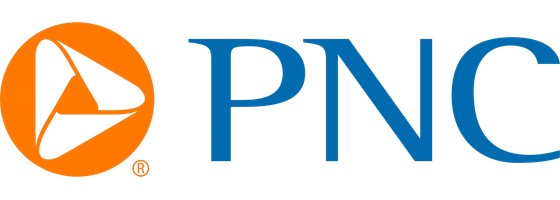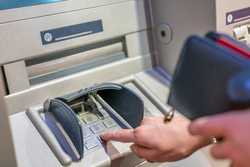Choosing a mobile banking app from so many options may seem daunting, but it needn’t be. This guide covers the best mobile banking apps to help you choose the one that will best fit your needs.
Best mobile banking apps compared
|
| | | | |
| | None for checking; 2.00% variable for savings | | $100 with referral program and direct deposit |
| | 0.50% (4.20% if you also have a savings account) | | Up to $300 bonus with qualifying direct deposits available through 12/31/24 |
| None for banking; $0-$1 on trades | Checking: 0.10%/0.25%; Savings: 4.35% variable | | $75 credit when you transfer at least $2,500 from another broker. |
Discover® Online Savings Account | | | | |
| $6.95 (waived in several ways) | | | |
| | 0.10% variable for checking; 4.35% variable for savings | | |
| $12 for checking; $5 for savings; both waivable under certain conditions | None for checking; 0.01% for savings | | $200 for checking; none for savings |
| $7 to $25 (waived in several ways) | | | Up to $400
(Expires 9/3/2024) |
| | 0.01% for checking and savings | | $200 for checking; none for savings |
| | 0.25% for checking; 3.10% for savings | | |
Our recommendations
Here are 10 recommended mobile banking apps in alphabetical order.
Cash App Mobile Banking
APY*
Up to 4.5% for savings
If you have a Cash App account, you can order a prepaid debit card, called a Cash App Card, for free. The card gives you access to perks such as direct deposit, free overdraft coverage, and ATM access using your Cash App account rather than a traditional checking account. Other benefits include instant discounts at retailers including Wal-Mart and Nike and such services as Lyft and DoorDash. You can also personalize your card, though only black-and-white classic cards are free; you can get colored or patterned cards for an additional fee and add emojis, doodles, and more to make the card truly yours. Cash App also allows you to transfer money to your bank for free, though there is a fee for instant transfers.
Note that Cash App is not a bank; instead, it’s a financial services platform linked to a debit card or bank account. Sending money from a credit card will come with a 3% fee, though there’s no fee associated with sending money from a debit card or bank account.
The App makes it easy to send and receive payments with a basic limit of $1,000 per month, though you can access higher limits by verifying your identity. Cash App also offers a savings account with up to 4.5% interest when you deposit $300 or more per month, and you can also invest in stocks through the app with as little as $1 or even get started investing in Bitcoin. Finally, Cash App allows you to file taxes for free.
Pros:
- Free Cash App card offering direct deposit and ATM access.
- Fee-free ATM withdrawals are available.
- Instant discounts at a variety of retailers and services.
- Up to 4.5% interest on savings.
- Purchase stocks with as little as $1.
- Free tax-filing services.
Cons:
- Cash App is a financial services platform, not a bank.
- Fees apply for instant deposits.
- Fees apply to send money via credit card.
Chime® Banking App
APY*
None for checking; 2.00% variable for savings
The Chime app is rated 4.8 on Apple and 4.7 on Google, making it among the highest-rated apps on this list. The app allows you to check your balances, pay bills online, transfer money to and from external accounts, and deposit checks. You can also freeze your card from the app if it’s lost or stolen, which prevents fraud, and you’ll get instant alerts for every transaction you make, so you can keep a closer eye on your finances. Finally, you can get instant customer support from the app whenever needed.
Chime is a financial technology company offering banking services such as checking and savings accounts and a credit-builder credit card. It features early direct deposit, allowing you to receive your payment up to two days early. Although there may be out-of-network ATM fees, Chime customers can use a network of more than 60,000 fee-free ATMs. Other benefits of banking with Chime include no monthly or foreign transaction fees and no minimum balance requirement.
Pros:
- Freeze your debit card from the app if lost or stolen.
- Instant transaction alerts with every purchase.
- Live 24/7 in-app support.
- Early direct deposit.
- No monthly or foreign transaction fees.
Cons:
- Out-of-network ATM fees apply.
Sofi Online Checking Account
APY*
0.50% (4.20% if you also have a savings account)
Promotion
Up to $300 bonus with qualifying direct deposits available through 12/31/24
The SoFi app scores 4.8 on Apple and 4.0 on Google. You can use it to monitor your accounts, rewards, and loans, as well as to invest money.
Sofi customers are eligible for a $300 cash bonus if they enroll in direct deposit, which is the largest benefit among the banks on our list. In addition, SoFi doesn’t charge any monthly or overdraft fees or have an initial deposit requirement, though the overdrawn limit is only $50. You can even access your paycheck early, thanks to SoFi’s early direct deposit.
Sofi doesn’t offer reimbursement for out-of-network ATM fees, though it has a network of more than 55,000 fee-free ATMS, and it charges a fee for cash deposits. Still, checking customers can earn cash back on debit card purchases, an extra perk that might override these potential cons. Also, its 0.50% variable APY on its checking account and 4.60% variable APY on its savings account are both the highest among the apps profiled here, and among checking and savings accounts in the market.
Pros:
- Ability to invest money from the app.
- $300 bonus when you enroll in direct deposit.
- Cash back on debit card purchases.
- No monthly or overdraft fees.
- Early direct deposit.
- High variable APYs on checking and savings.
Cons:
- Overdrawn limit is only $50.
- No reimbursement for out-of-network ATM fees.
- Fee for depositing cash.
Ally
Ally
APY*
Checking: 0.10%/0.25%; Savings: 4.35% variable
Ally’s mobile app scores 4.7 on Apple and 3.1 on Google. Although the latter is a relatively low rating, Ally takes the time to respond to negative reviews and tries to make things right for customers.
The app features Ally Assist, an artificial intelligence (AI) agent that can answer basic banking questions immediately. Other benefits include no requirements for initial deposit amounts or minimum balances, no monthly or overdraft fees, overdraft protection, early direct deposit, and ATM fee reimbursement of up to $10 per month.
Being an online bank, Ally has no physical locations, so there isn’t an option to deposit cash. Also, Ally isn't currently offering a welcome bonus for new banking customers.
Pros:
- Mobile check deposit.
- Ally Assist AI banking agent.
- ATM fee reimbursement up to $10 per month.
- No monthly or overdraft fees.
- Overdraft protection.
- Early direct deposit.
Cons:
- No physical locations.
- No option to deposit cash.
- No welcome bonus.
Discover® Online Savings Account
Discover’s mobile app scores 4.9 on Apple and 4.6 on Google. The app includes mobile check deposits, free access to Zelle, and account and activity alerts. If you lose your debit card, you can freeze it from the app to avoid unapproved charges. Finally, the Discover app is compatible with wearable tech, so you can access your banking information from a smartwatch or similar device.
Customers can get answers to their queries at any time with 24/7 customer service, and Discover Bank doesn’t charge any monthly or overdraft fees or have an initial deposit requirement. Although the app doesn’t offer budgeting or savings tools, customers can easily link their Discover account to a third-party budgeting app. There’s also no option for cash deposits and no out-of-network ATM fee reimbursement, though Discover’s ATM network is 415,000 strong (including more than 60,000 fee-free ones). Discover checking account customers can enjoy 1% cash back on up to $3,000 of monthly debit card purchases.
Pros:
- Mobile check deposit.
- Fee-free access to Zelle.
- Compatible with wearable tech.
- No monthly or overdraft fees.
- Cash-back on debit card purchases.
- Around-the-clock customer service.
Cons:
- No budgeting or savings tools.
- No option to deposit cash.
- No reimbursement for out-of-network ATM fees.
U.S. Bank Smartly
Monthly fee
$6.95 (waived in several ways)
U.S. Bank Smartly Checking
Learn more
The U.S. Bank Smartly app is designed to let you manage your money easily thanks to features like mobile check deposits, automated bill pay, account alerts and reminders, and Zelle instant transfers. The app also has an AI-powered Smart Assistant, which can help with common banking questions and commands like “transfer money from my savings account” or “activate my debit card.” To use this feature, simply type in your command or speak it out loud, and Smart Assistant will provide an answer if it can.
The U.S. Bank Smartly checking account also offers the Smart Rewards program, which includes overdraft forgiveness, no ATM fees, and interest earned on checking. The more money you have in your account, the greater the awards you’ll earn. Another perk of this account is the goal planner, which lets you set savings goals for specific items or projects and informs you of your progress.
U.S. Bank has a $6.95 monthly maintenance fee for the Bank Smartly account, but it’s waivable under certain conditions. The $0 maintenance fee requirements include an average account balance of at least $1,500, a qualifying U.S. Bank consumer credit card, or combined monthly direct deposits of $1,000 or more.
Pros:
- AI-powered Smart Assistant can help with basic inquiries.
- Smart Rewards program includes exclusive benefits and pricing discounts.
- Goal planner helps you save money for upcoming expenses.
Cons:
- Monthly maintenance fee of $6.95.
Capital One
Capital One
APY*
0.10% variable for checking; 4.35% variable for savings
The Capital One banking app has a rating of 4.8 on Apple and 4.6 on Google. The app will send proactive alerts about unusual activity, such as duplicate charges, so you can address them quickly. You can also lock your card, view your balances, and monitor your credit score, all from the app.
Capital One customers enjoy no initial deposit or minimum balance requirements, no monthly or foreign transaction fees, and early direct deposit. Although Capital One doesn’t reimburse out-of-network ATM fees, there are more than 70,000 fee-free ATMs nationwide. Several overdraft protection options exist, including automatic free transfers from a linked account and auto-decline for transactions that will cause an account to become overdrawn. Unfortunately, the app has limited customer service.
Pros:
- Proactive alerts about unusual banking activity.
- Ability to lock your card directly from the app.
- Credit score monitoring service.
- No monthly or foreign transaction fees.
- Several overdraft protection options.
- Early direct deposit.
Cons:
- No reimbursement for out-of-network ATM fees.
Chase
Chase Total Checking
APY*
None for checking; 0.01% for savings
Monthly fee
$12 for checking; $5 for savings; both waivable under certain conditions
Promotion
$200 for checking; none for savings
The Chase mobile app scores 4.8 on Apple and 4.4 on Google. The app offers fraud monitoring, mobile check deposit, and fee-free access to Zelle. You can also opt into offers directly from the app and track earned points. Finally, you can use the Chase Credit Journey feature to monitor your credit score and identify any issues.
Chase offers new Total Checking Account customers a $300 bonus (until October 16, 2024) if they make direct deposits of $500 or more in the first 90 days after opening an account. There’s no initial deposit requirement, and Chase has more than 4,700 physical branches that you can visit if you prefer to bank in person.
Checking customers are charged a $12 monthly fee, but there are ways to waive it. The bank also charges fees for foreign transactions, overdrafts, and wire transfers. However, Chase does offer overdraft protection, which can help you avoid some of these fees.
Pros:
- Credit and identity monitoring service.
- Fee-free access to Zelle.
- A $300 bonus when you make direct deposits totaling $500 or more within 90 days.
- Overdraft protection.
- More than 4,700 physical branches.
Cons:
- A $12 monthly fee for checking accounts ($5 for savings accounts).
- No reimbursement for non-Chase ATM fees.
- A 3% fee for foreign transactions.
- Overdraft and wire transfer fees.
PNC Virtual Wallet
PNC Virtual Wallet
Monthly fee
$7 to $25 (waived in several ways)
Promotion
Up to $400
Expires 9/3/2024
PNC Virtual Wallet is a combined checking and savings account that makes it easy to manage your money via the app. There are three options to choose from, and all include a primary checking account called Spend, a secondary checking account called Reserve, and a long-term savings account called Growth. All three options come with a monthly maintenance fee ranging from $7 to $25, though this fee is waivable if you meet certain requirements (either a minimum monthly direct deposit amount or a minimum combined balance between checking and savings accounts).
The account also has a tool called Low Cash Mode, which is designed to help you avoid overdraft fees. The tool’s features include a $0 non-sufficient funds fee, customized alerts for low balances, and at least 24 hours to add money to your account to bring your balance to $0.
Finally, PNC Virtual Wallet offers up to 1.3% APY for the Growth account. To get that APY, you’ll need a balance of at least $100,000; balances under that amount will earn 0.04% APY.
Pros:
- Combined checking and savings accounts.
- The Low Cash Mode tool helps you avoid overdraft fees.
- Up to 1.3% APY on savings accounts.
Cons:
- Monthly maintenance fee ranges from $7 to $25.
USAA
USAA
APY*
0.01% for checking and savings
Min. deposit
$25 for checking and savings
Promotion
$200 for checking; none for savings
The USAA app scores 4.8 on Apple and 4.0 on Google. The app lets you pay bills, see account activity, send and receive money, and deposit checks. If you have other USAA products, such as a loan or insurance, you can check your balance, make payments, and get proof of insurance from the app. The app also has an automated assistant that can answer basic questions.
USAA requires you to be a member to become a banking client. Membership is limited to active-duty military members, veterans, and eligible family members, so this app won’t be an option for everyone. There’s also a low APY on savings products compared with other banks, though you can get a $200 bonus if you enroll in direct deposit. USAA has a wide range of products, making it easy to manage your finances from one location.
Pros:
- Ability to view all USAA products from one app.
- Automated assistant can help with basic inquiries.
- A $200 bonus when you enroll in direct deposit.
- Wide range of banking products.
Cons:
- Must be a USAA member to apply.
- Low APY on savings products.
Alliant Credit Union
Allliant Credit Union
APY*
0.25% for checking; 3.10% for savings
Min. deposit
None for checking; $5 for savings
Alliant Credit Union’s mobile app has a 4.7 out of 5 rating on the Apple App Store and a 4.5 out of 5 rating on Google Play. The app allows you to deposit checks, make payments, and sync with third-party budgeting tools, such as Quicken Web Connect or Rocket Money, to manage your money more easily.
Alliant’s high-yield checking account offers a potential annual percentage yield (APY) of 0.25%, which is high for a checking account; however, to get it, you’ll need to set up a monthly direct deposit and opt in to electronic bank statements. Other benefits of banking with Alliant Credit Union include no overdraft fees and an ATM fee reimbursement of up to $20 per month.
Pros:
- ATM fee reimbursement up to $20 per month.
- No overdraft fees.
- Potential 0.25% APY for checking account.
Cons:
- No built-in budgeting tools.
- Requirements for top checking APY.
Methodology
To select the best mobile banking apps, we checked ratings and reviews on the Apple App Store and Google Play, choosing the apps with the best ratings as our contenders. Once we had our shortlist, we reviewed information about the apps and accounts offered at each bank, weighing their pros and cons to decide which ones stood out among their competition.
How to pick the best mobile banking app
Picking a banking app isn’t as straightforward as downloading a game or photo editing app to your phone. To choose the best mobile banking app, you’ll need to review the pros and cons of each bank you’re considering.
For example, if you need a bank offering early direct deposit, you’ll want to ensure that’s an option before choosing the app. If you’re looking for an account with no monthly fees, you’ll want to avoid apps tied to banks that charge them.
When comparing mobile banking apps specifically, check the customer reviews on the Apple and Google stores. Remember to take negative reviews with a grain of salt, because human nature is such that customers are more likely to leave a review after a negative experience than a positive one.
Alternatives to mobile banking
Online safety has come a long way, but some users may still be wary about using an app to manage their finances. Luckily, there are alternatives if you’d prefer not to do your banking through an app.
- Online banking. You can use online banking to complete almost all of the same functions you could through a mobile app, although you won’t be able to deposit checks using online banking.
- Phone banking. Most banks have customer call centers with representatives who can help you with many banking needs.
- In-person banking. If you’re old school, you can visit a branch of your bank in person. However, many banks mentioned in this list don’t have brick-and-mortar locations.
More on mobile banking
What is a mobile banking app?
A mobile banking app lets you manage your finances using your smart device. Most modern banks have apps available through the Apple App Store or Google Play. Using an app, you can quickly check your balance, move money around, or cash a check. The exact functions will vary by bank, so checking that the app you’re considering has the features you want before committing is important.
Why should you get a mobile banking app?
Mobile banking is a necessity for many consumers. What used to be novel is now the norm, with most banks and credit unions offering an app that allows customers to monitor their finances from their mobile devices. In 2019 the Federal Deposit Insurance Corporation (FDIC) conducted a survey, How America Banks: Household Use of Banking and Financial Services, which found that 54.8% of banked U.S. households did their banking either online or with a mobile app (34% just used the app). Only three years later, that number had grown to 78% of U.S. adults, according to a 2022 Forbes Digital Banking Survey; only 29% preferred to do it in person.
What can you do through a mobile banking app?
Mobile banking apps allow you to perform a number of functions, though the exact options will depend on your chosen bank. The following are some of the most common functions of mobile banking apps.
- Account balance monitoring.
- Money transfers between accounts.
- Direct deposit setup.
- Mobile check deposit.
- Automatic bill pay.
- New account opening.
- Credit card or loan applications.
- Customer service.
- Personal information.
- Credit score monitoring.
TIME Stamp: A mobile banking app lets you manage your finances from your phone
Most banks offer a mobile app, but what it can do varies from one bank to the next. When choosing a bank, check the app’s features and ratings to ensure it will fit your needs. The right mobile app will let you deposit checks, monitor your accounts, transfer money, and pay bills from anywhere in the world. The best mobile apps listed here have a lot to offer.
Frequently asked questions(FAQs)
Can you make a budget with a banking app?
Not all banking apps allow you to make a budget. If your bank’s app does, you can use the budgeting tool to manage your money and set up alerts to let you know if you go beyond your means. If your bank’s app doesn’t include this feature, consider downloading a third-party budgeting app that you can link to your bank accounts.
RELATED: Best Mint Alternatives
Which bank has the best mobile deposit?
Every bank listed here has excellent mobile deposit features, including allowing you to deposit checks instantly.
What can be done with a mobile banking app that can’t be done online?
The main function that a mobile banking app has that’s not available with online banking is mobile check deposits. Using this function, you can snap a photo of a check, enter the check amount and the number of the account into which you want to deposit it, and instantly access your money.
What is the purpose of setting an alert in a mobile banking app?
Setting an alert in a mobile banking app allows you to see fraudulent charges, so you can take immediate action. Additionally, getting transaction alerts can help you be more conscious about spending, which is a huge plus if you’re trying to stick to a budget.


